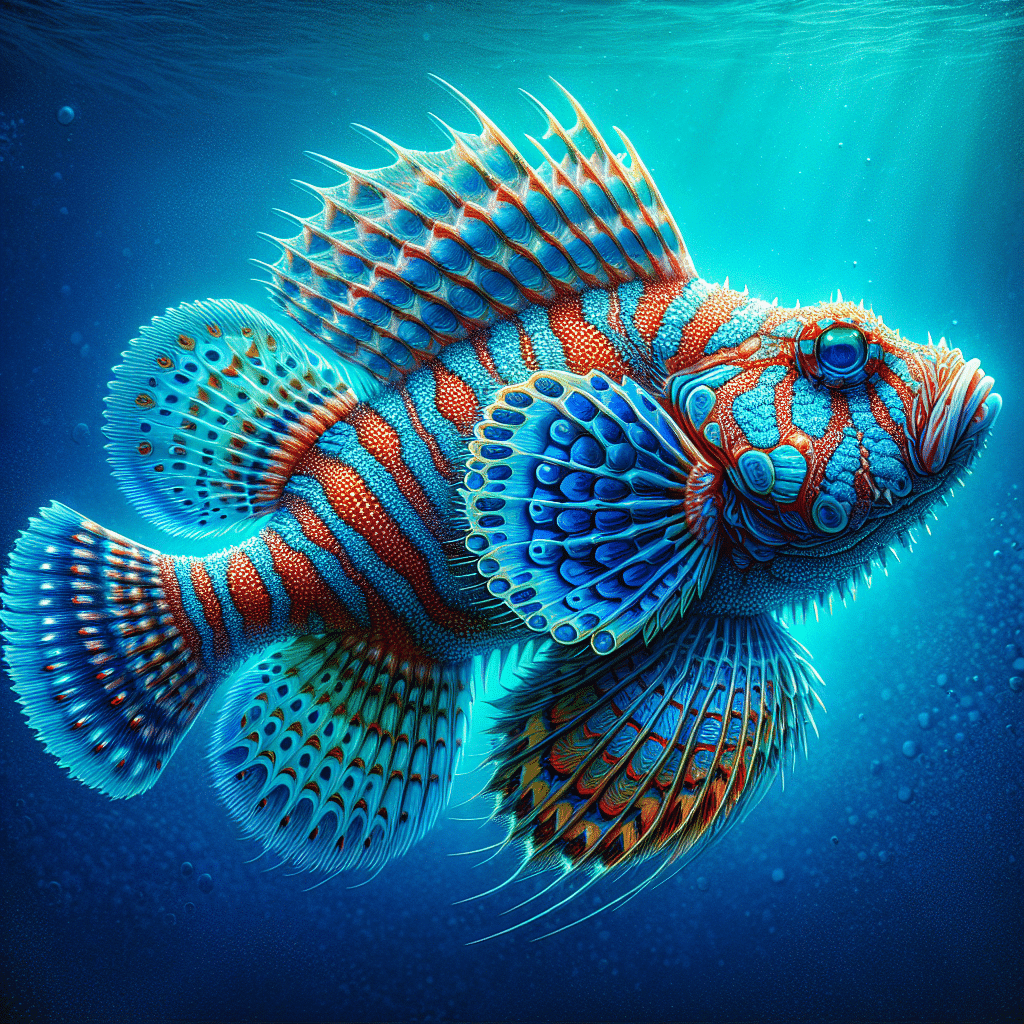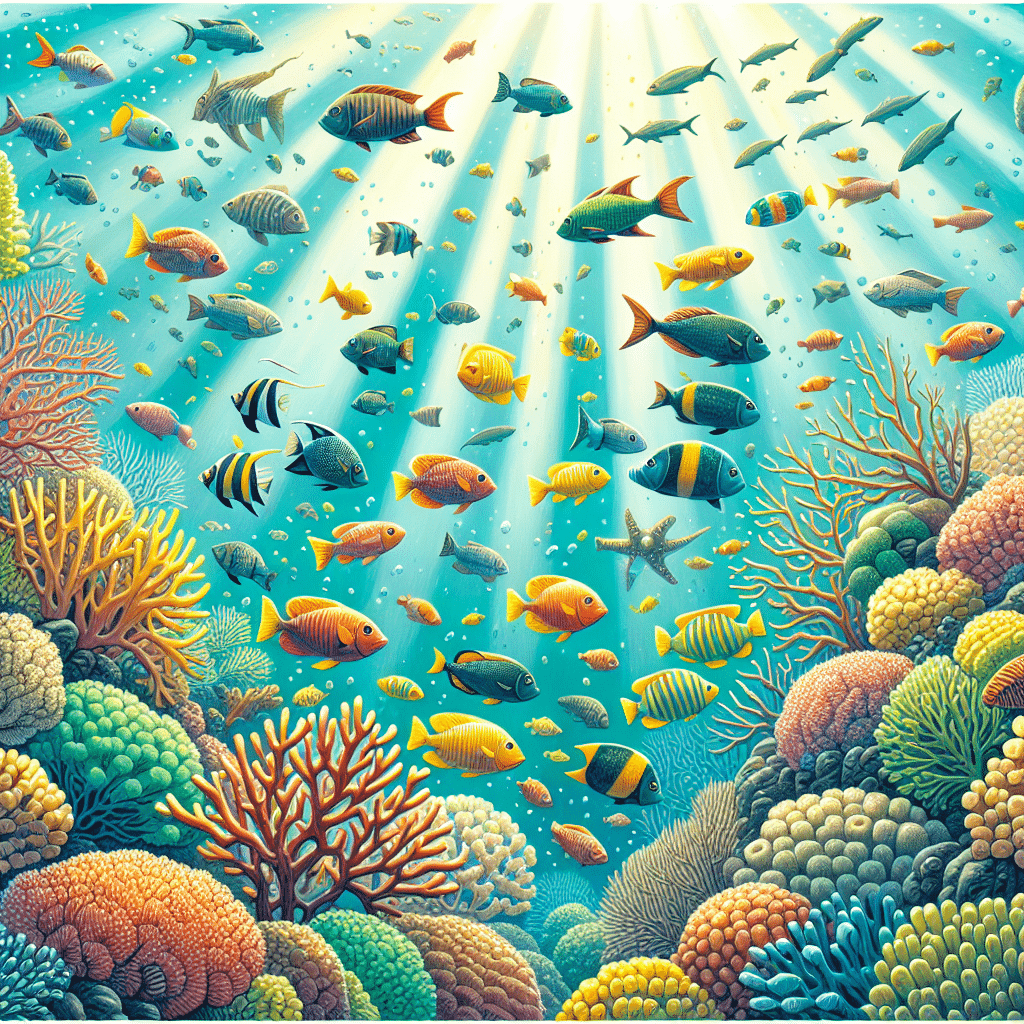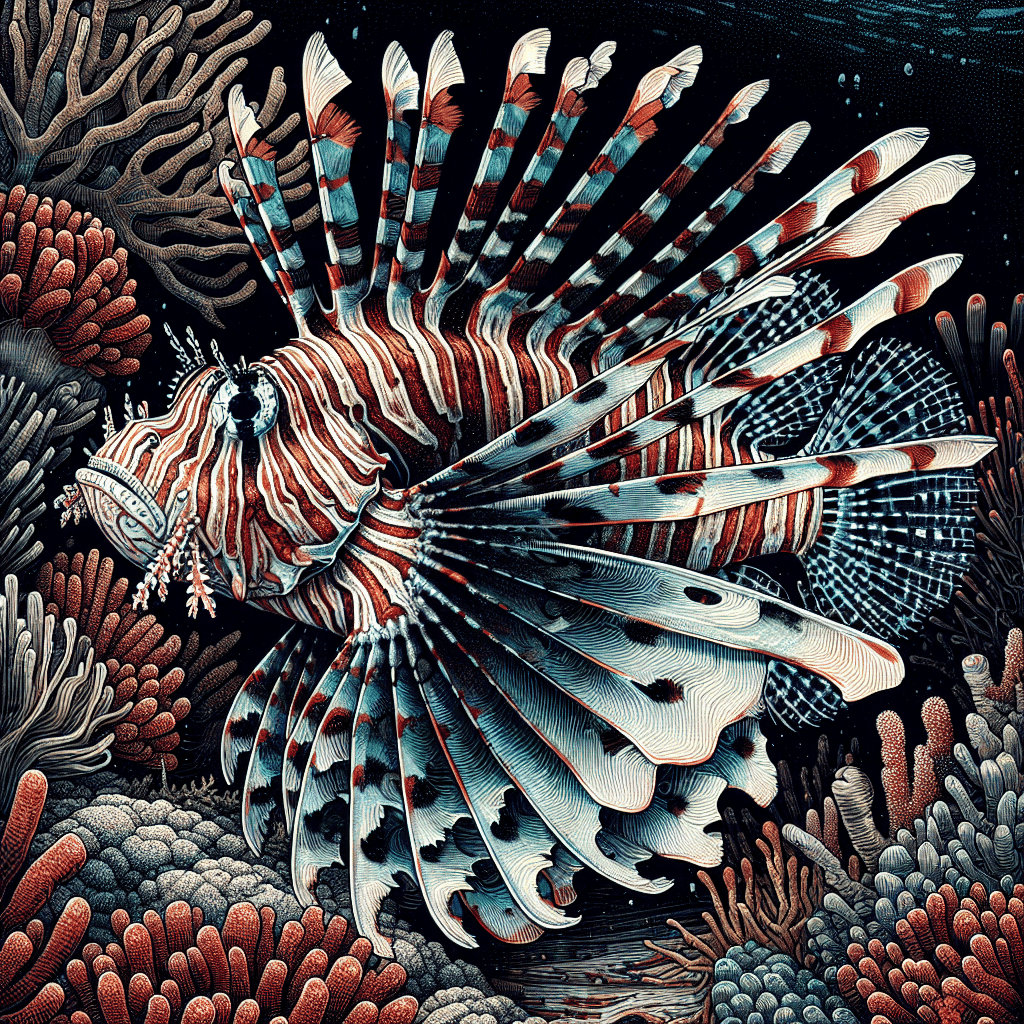Exploring Hawkfish Varieties
As I dive into the fascinating world of hawkfishes, I find it essential to highlight two specific categories: Cirrhitidae hawkfishes and the vibrant Flame Hawkfish. Each brings its own unique traits and behaviors that can enhance any reef tank.
Cirrhitidae Hawkfishes Overview
Cirrhitidae hawkfishes are a family of fishes that can be found across the tropical western and eastern Atlantic, Indian, and Pacific Oceans, primarily thriving in the Indo-West Pacific region. These benthic fishes inhabit coral reefs or rocky substrates, usually in shallow waters (Wikipedia). One of the most interesting aspects of their behavior is how they perch on higher areas of their habitat, much like their namesake hawks. They patiently wait before diving down to catch unsuspecting prey that comes into view, showcasing a hunting technique that’s both efficient and captivating.
| Feature | Description |
|---|---|
| Family | Cirrhitidae |
| Habitat | Coral reefs, rocky substrates |
| Range | Tropical western/eastern Atlantic, Indian, and Pacific Oceans |
| Behavior | Sit and wait predators |
Flame Hawkfish Characteristics
The Flame Hawkfish, also known as the Red Hawkfish, stands out with its vibrant red coloration and engaging personality. Scientifically recognized as Neocirrhitus armatus, this small-sized fish can grow up to 3.5 inches (9 centimeters) and typically has a life expectancy of about 10 years. Its native range extends across the western and central Pacific Ocean, from the Ryukyu Islands in the northwest to the Samoan Islands in the east, but it is not found in the Indian Ocean (The Spruce Pets).
Flame Hawkfish are predatory bottom-dwellers that enjoy perching atop rocks or corals, keeping a watchful eye for potential meals. This behavior not only makes them visually appealing but also adds dynamic activity to the aquarium. Their personable nature and striking appearance make them a popular choice among aquarium enthusiasts.
| Feature | Description |
|---|---|
| Common Name | Flame Hawkfish |
| Scientific Name | Neocirrhitus armatus |
| Maximum Size | 3.5 inches (9 cm) |
| Lifespan | Up to 10 years |
| Native Habitat | Western/Central Pacific Ocean |
For those looking to add some color and personality to their reef tank, the Flame Hawkfish is definitely a worthy consideration. If you’re interested in more information about maintaining hawkfishes, check out my guides on marine fish and specific care tips for reef tank fish.
Habitat and Behavior
Natural Habitat of Hawkfish
Hawkfish, belonging to the family Cirrhitidae, are predominantly found in tropical waters across the western and eastern Atlantic, Indian, and Pacific Oceans, with a significant presence in the Indo-West Pacific region. They are primarily benthic fish, meaning they prefer to inhabit the ocean floor, particularly around coral reefs and rocky substrates. Most of the time, you can find them in shallow waters, as they rarely dive deeper than 100 feet. Without an air bladder, these fish tend to sink when not in motion, making their perched positions on corals or substrates essential for their lifestyle.
| Region | Depth Range | Common Habitats |
|---|---|---|
| Indo-Pacific | Shallow waters | Coral reefs, rocky areas |
| Atlantic | Shallow waters | Coral reefs, rocky areas |
| Eastern Pacific | Up to 98 ft | Reefs, tidal pools |
Feeding Behavior of Hawkfish
Hawkfish are known for their unique feeding strategy. They typically sit and wait on elevated areas of their environment, much like a hawk perched and scanning for prey. Once they spot a potential meal below, they dive down swiftly to catch it. This behavior is quite fascinating and contributes to their name. They primarily consume small fish and invertebrates, showcasing both patience and precision in their hunting technique (Reefkeeping Magazine).
Hawkfish are constantly on the lookout for food while perched, using their excellent vision to detect movement below. This hunting style is efficient and allows them to thrive in their natural habitats. If you’re maintaining a reef tank, understanding this behavior is crucial for ensuring that your hawkfish have ample space and suitable conditions to engage in their natural feeding habits.
For more information on the types of fish that can coexist with hawkfish, check out our section on marine fish.
Popular Hawkfish Species
As a reef tank enthusiast, I find the different species of hawkfish to be both fascinating and colorful additions to any aquarium. Here’s a closer look at three popular hawkfish species: the Flame Hawkfish, Longnose Hawkfish, and Hi Fin Checker Hawkfish.
Flame Hawkfish
The Flame Hawkfish, also known as the Red Hawkfish, is a vibrant choice for any aquarium. It boasts a stunning red color and a personable nature that makes it a favorite among hobbyists. This small predatory bottom-dweller can grow up to 3.5 inches (9 centimeters) and has a life expectancy of up to 10 years (The Spruce Pets).
Flame Hawkfish enjoy perching on rocks or corals, keeping a watchful eye for unsuspecting prey. Their active behavior and eye-catching appearance make them a delightful addition to reef tanks.
| Feature | Details |
|---|---|
| Scientific Name | Neocirrhitus armatus |
| Maximum Size | 3.5 inches (9 cm) |
| Life Expectancy | Up to 10 years |
| Color | Vibrant red |
Longnose Hawkfish
The Longnose Hawkfish, scientifically known as Oxycirrhitus typus, is another excellent choice for reef tanks. This species is naturally distributed throughout the Indo-Pacific region, including the Red Sea, East Africa, and the central Pacific islands (Abyss Aquatics).
These hawkfish have elongated snouts that give them a unique appearance. They can be found resting on corals or rock ledges, where they keep an eye out for small fish and invertebrates.
| Feature | Details |
|---|---|
| Scientific Name | Oxycirrhitus typus |
| Natural Habitat | Indo-Pacific, Red Sea |
| Appearance | Long snout, colorful body |
Hi Fin Checker Hawkfish
The Hi Fin Checker Hawkfish (Plectranthias inermis) is a colorful and striking fish, primarily found in the Pacific Ocean, including regions such as Hawaii and Fiji. This species has a maximum size of around 4 inches (10 centimeters) and features vibrant red, yellow, and white markings.
These hawkfish are not only beautiful but also exhibit interesting behaviors as they navigate their environment. Their lively presence adds a splash of color and character to any reef setup.
| Feature | Details |
|---|---|
| Scientific Name | Plectranthias inermis |
| Maximum Size | 4 inches (10 cm) |
| Coloration | Red, yellow, and white markings |
Adding any of these hawkfish species to my reef tank can enhance both the beauty and the dynamics of the aquarium. Whether I prefer the vibrant Flame Hawkfish, the unique Longnose Hawkfish, or the colorful Hi Fin Checker Hawkfish, I am sure to enjoy their presence in my aquatic world.
Hawkfish Care Tips
Taking care of hawkfishes can be a rewarding experience. I’ve found that understanding their tank setup and feeding requirements is key to keeping them healthy and thriving. Here’s what I’ve learned about creating the perfect environment and diet for these fascinating fish.
Tank Set-Up for Hawkfish
When setting up a tank for hawkfishes, it’s important to create a suitable environment that mimics their natural habitat. Here are some key points to consider:
| Feature | Recommendation |
|---|---|
| Tank Size | Minimum 30 gallons |
| Water Temperature | 72°F to 78°F |
| pH Level | 8.1 to 8.4 |
| Salinity | 1.020 to 1.025 specific gravity |
| Filtration | High-quality filtration system |
| Decor | Live rock and hiding spots |
Hawkfishes are relatively resilient, and they are considered “bulletproof” when it comes to disease management. They do best in a stable environment, so maintaining consistent water parameters is crucial. Adding plenty of live rock provides them with hiding places and a sense of security.
Feeding Requirements
Feeding hawkfishes can be straightforward, as they readily accept a variety of foods. They are carnivorous and thrive on a diet rich in protein. Here’s a breakdown of their dietary needs:
| Food Type | Examples |
|---|---|
| Live Foods | Small shrimp, brine shrimp |
| Frozen Foods | Mysis shrimp, chopped fish |
| Dry Foods | High-quality pellets or flakes (as a supplement) |
For species like the Longnose Hawkfish, I’ve noticed they do well with live or frozen meaty foods such as small crustaceans to meet their nutritional requirements (Abyss Aquatics). Similarly, the Hi Fin Checker Hawkfish also benefits from a varied diet of high-quality foods (Abyss Aquatics).
It’s important to feed them small amounts several times a week rather than overfeeding to maintain good water quality. By ensuring they have a balanced diet, I’ve seen my hawkfishes thrive and display their natural behaviors more vividly.
For other marine species that can coexist with hawkfishes, check out our articles on marine fish and specific species like clownfish and tang. Keep an eye on your tank mates to ensure a peaceful community!
Unique Features of Hawkfish
Hawkfish are fascinating creatures with some unique characteristics that set them apart in the reef tank world. Two notable features are their ability to change sex and their vibrant coloration mechanisms.
Sex Change in Hawkfish
One of the most intriguing aspects of hawkfish is their reproductive strategy. Hawkfish are protogynous or sequential hermaphrodites, which means all individuals start life as females. In the absence of a male, the dominant female can change sex and become male (The Spruce Pets). This transformation is crucial for maintaining the social structure within their groups.
Males are generally larger than females and assert control over their territory, which typically includes at least two to seven females. They form harems, visiting each female to mate and ensuring the continuation of their lineage (Reefkeeping Magazine). This ability to change sex allows hawkfish to adapt to their social environment, ensuring that mating opportunities are maximized.
Coloration Mechanisms
Hawkfish are known for their striking colors and patterns. Their vibrant hues serve multiple purposes, such as attracting mates and warding off potential threats. The coloration mechanisms in hawkfish involve specialized pigment cells called chromatophores, which can expand or contract to change the fish’s appearance rapidly.
Different species exhibit varying color patterns, which can reflect their habitat and behavior. For instance, bright colors may help hawkfish blend into their surroundings or stand out to potential mates. This adaptability in coloration is not just for show; it plays a vital role in their survival within the diverse marine ecosystem.
By understanding these unique features of hawkfish, I can appreciate their role in the reef tank and how they interact with their environment. Whether I’m interested in their sex-changing abilities or their beautiful colors, hawkfish offer a lot of fascinating insights for any aquarium enthusiast. If you’re looking to learn more about other types of marine fish, check out our section on marine fish.
Giant Hawkfish Profile
Giant Hawkfish Appearance
The giant hawkfish (Cirrhitus rivulatus) is a striking species that stands out in any reef tank. It is the largest member of the hawkfish family, reaching a maximum total length of 60 cm (24 in) and weighing up to 4.2 kg (9.3 lb) (Wikipedia). The largest specimen recorded by the International Game Fish Association was 5.58 kg (12.3 lb), caught off Ecuador in 2019.
In terms of coloration, the giant hawkfish has a unique body pattern. Its overall color is greyish-brown with five vertical bars made of golden-brown markings, each bordered by narrow bright blue edges. Notably, the head features thick golden-brown bands with black margins and slender blue edges radiating from the eyes. Many individuals display a pair of white spots on the posterior part of the back, while juveniles are characterized by an overall white body adorned with dark brown bars.
| Attribute | Description |
|---|---|
| Maximum Length | 60 cm (24 in) |
| Maximum Weight | 4.2 kg (9.3 lb) |
| Color Pattern | Greyish-brown with vertical bars, golden-brown markings, and blue edges |
| Juvenile Appearance | White body with dark brown bars |
Giant Hawkfish Habitat and Behavior
The giant hawkfish is endemic to the eastern Pacific Ocean, specifically ranging from southern Baja California and the northern Sea of Cortez to Ecuador. It is typically found on reefs in shallow waters, usually at depths of up to 30 m (98 ft). Juveniles often inhabit surge zones and tidal pools (Wikipedia).
This species is solitary and benthic, often remaining still on rock ledges, which allows its body pattern to blend in with the surrounding rocks. The giant hawkfish preys on small fishes, crustaceans, and even small marine iguanas (Amblyrhynchus cristatus). When perched on rocks, it often sits on its pectoral fins, giving it a distinctive appearance.
Seasonal movements are observed in giant hawkfish, with individuals in southern Baja California migrating to shallower waters as temperatures rise, typically in May. This behavior helps them adapt to changing environmental conditions.
For more insights on different fish in aquatic environments, check out articles on marine fish and other fascinating species like lionfish and clownfish.



